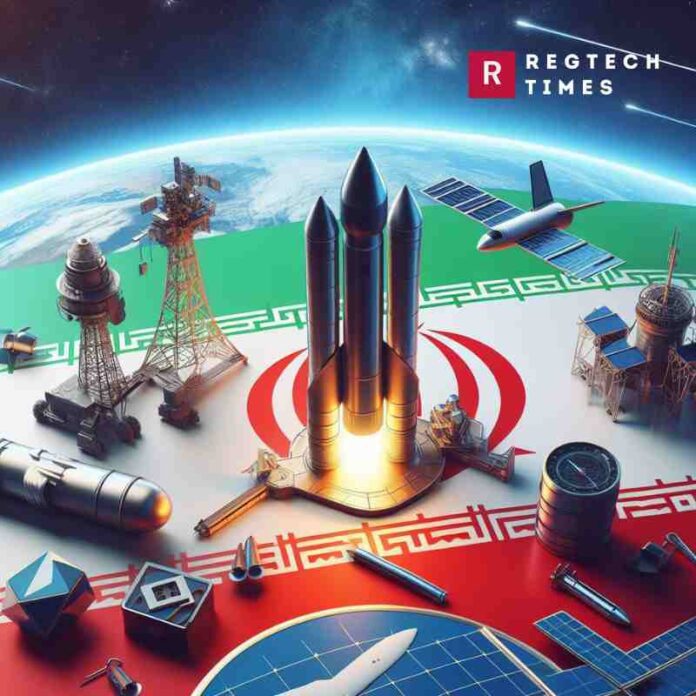The helicopter crash that killed Iran’s President Ebrahim Raisi and Foreign Minister Hossein Amirabdollahian on Sunday, May 19, has brought to light the dire state of Iran’s aviation sector. The crash occurred in Iran’s mountainous East Azerbaijan province, amid dense fog. 1979 US Sanctions have caused irreparable damage to Iran. However, many experts believe technical problems were likely to be blamed, pointing to the age and condition of the aircraft as a significant factor.
The Crash and Immediate Reactions
The ill-fated Bell 212 chopper, over three decades old, was a critical symbol of Iran’s struggling aviation sector. US State Department spokesperson Matthew Miller highlighted the helicopter’s age, calling it a “45-year-old helicopter,” underscoring the broader issues facing Iran’s fleet. The age of an aircraft is directly linked to its reliability and safety, a fact well-documented by aviation experts. So, why was the President of Iran flying in such an outdated aircraft?
Sanctions and Their Effects on Iran’s Aviation
Since the 1979 Revolution that ousted Iran’s monarchy, the country has faced numerous sanctions from the West, particularly the United States. Until Russia’s invasion of Ukraine in 2022, Iran held the dubious distinction of being the most sanctioned country in the world. These sanctions aim to isolate Iran internationally and cripple its economy, with devastating impacts on its aviation sector.
US sanctions, for example, prevent Iran from receiving any aircraft or aircraft equipment built with more than 10% American-made parts. The European Union and individual Western nations have imposed similar restrictions. Given that most global aircraft manufacturing is based in the US and Europe, these sanctions severely restrict Tehran’s ability to purchase new aircraft and acquire the necessary spare parts to maintain its aged fleet.
You May Like to Read Iran Sanctions and Chronicle of Events from 1979
Technical and Logistical Challenges
Beyond aircraft and spare parts, sanctions have also stymied Iran’s access to technical know-how for repairs and maintenance. Bell Textron, the US-based manufacturer of the helicopter that crashed, stated, “Bell does not conduct any business in Iran or support their helicopter fleet.” This lack of support extends to many other aircraft in Iran’s fleet, further compounding maintenance challenges.
Russia, another potential source of aircraft and parts, is limited in its ability to help due to its own reliance on US parts, especially electronics and sensors. Furthermore, Russia’s own sanctions and logistical constraints following the Ukraine war have left Moscow unable to assist Tehran significantly. Although there have been discussions about Iran obtaining Russian Su-35 jets, no concrete deals have been made.
Ageing Fleet and 1979 US Sanctions
The 1979 US Sanctions have led to Iran’s commercial passenger fleet having an average age of nearly 28 years, more than double the global average. Iran Air, the national carrier, operates planes that are over 40 years old. In stark contrast, airlines like Qatar Airways have fleets with an average age of under 9 years.
Studies indicate that older aircraft are more prone to accidents and mechanical failures. Professor R John Hansman of the Massachusetts Institute of Technology highlighted that aircraft over 20 years old show a trend of increased accident rates due to factors like weaker crew training and regulatory oversight, which correlate with aircraft age.
Since sanctions were first imposed in 1979, Iran has experienced a poor aviation safety record. The Geneva-based Bureau of Aircraft Accidents Archives (B3A) records 73 aircraft accidents (excluding helicopters) in Iran, resulting in 2,286 deaths. The US-based Aviation Safety Network (ASN) reports 109 accidents between 1979 and 2002. By comparison, neighbouring Pakistan saw only 42 accidents during the same period, with 854 casualties.
Temporary Relief and Renewed Challenges
The 2015 Iran nuclear deal briefly lifted some sanctions, allowing Iran to sign deals worth over $40 billion with Boeing and Airbus. However, President Donald Trump’s 2018 decision to withdraw from the deal abruptly ended Iran’s opportunity to upgrade its fleet. During the brief window of relief, Iran managed to acquire only three Airbus jets and 13 smaller turboprop planes.
The Bell 212 Helicopter: A Closer Look
The helicopter involved in the recent crash was a Bell 212, a civilian version of the Vietnam War-era UH-1 Huey. Developed by Bell Textron for the US military in the late 1960s, the Bell 212 was introduced in 1971 and quickly adopted by both the US and Canada. The helicopter’s design, featuring two turbo-shaft engines, allowed for greater carrying capacity and versatility.
The Bell 212 serves various roles, including passenger transport, aerial firefighting, cargo ferrying, and even weapon deployment. Non-military operators of the Bell 212 include Japan’s Coast Guard, US law enforcement agencies, Thailand’s National Police, and many others. The latest version, the Bell 412, is used for police operations, medical transport, troop transport, the energy industry, and firefighting.
The most recent fatal crash involving a Bell 212 before the Iranian incident occurred in September last year when a privately operated aircraft crashed off the coast of the United Arab Emirates. The last known Iranian crash of this model was in 2018, killing four people.
The tragic crash that killed Iran’s President and Foreign Minister highlights the severe impact of decades-long sanctions on the country’s aviation sector. As Iran grapples with the challenges of maintaining an ageing fleet amidst crippling sanctions, the international community must consider the broader implications of these restrictions on civilian safety and diplomatic relations.
This incident underscores the urgent need for comprehensive solutions to address the aviation sector’s woes, ensuring the safety and reliability of air travel in Iran.


